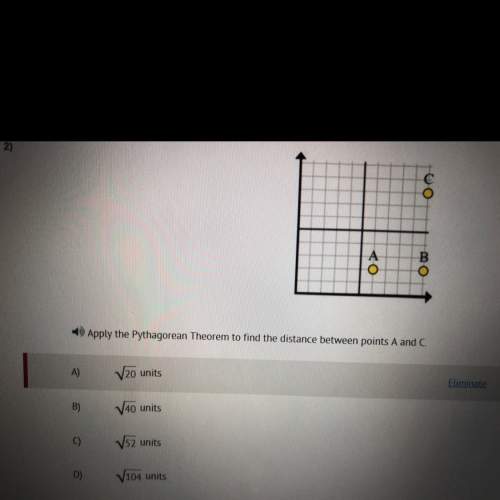Discussion Topic
In this unit, you studied a handful of circle theorems. However, there are ot...

Mathematics, 06.05.2020 04:59 randallmatthew6124
Discussion Topic
In this unit, you studied a handful of circle theorems. However, there are other circle theorems not covered in this unit or course. Do some research online or in textbooks to uncover a circle theorem (or more than one) that wasn’t presented in this unit. Describe it in detail. Then write either a two-column proof or a paragraph proof for the theorem.
Does the theorem that you proved relate to theorems that you previously studied? If so, how? Were you able to apply some theorems that you proved earlier to your newfound theorem? Explain. How might your theorem be used in a real-world application?
these are the theorems we have studied
Circle Theorem 1 - Angle at the Centre.
• Circle Theorem 2 - Angles in a Semicircle.
• Circle Theorem 3 - Angles in the Same Segment.
• Circle Theorem 4 - Cyclic Quadrilateral.
• Circle Theorem 5 - Radius to a Tangent.
• Circle Theorem 6 - Tangents from a Point to a Circle
• Circle Theorem 7 - Tangents from a Point to a Circle II
• Circle Theorem 8 - Alternate Segment Theorem

Answers: 1


Another question on Mathematics

Mathematics, 21.06.2019 16:30
What is the difference between regular convex and concave polygons
Answers: 1

Mathematics, 21.06.2019 20:40
Lines a and b are parallel. what is the value of x? -5 -10 -35 -55
Answers: 2

Mathematics, 21.06.2019 21:00
Eliza wants to make $10,000 from her investments. she finds an investment account that earns 4.5% interest. she decides to deposit $2,500 into an account. how much money will be in her account after 14 years?
Answers: 1

Mathematics, 21.06.2019 23:00
Each of the following data sets has a mean of x = 10. (i) 8 9 10 11 12 (ii) 7 9 10 11 13 (iii) 7 8 10 12 13 (a) without doing any computations, order the data sets according to increasing value of standard deviations. (i), (iii), (ii) (ii), (i), (iii) (iii), (i), (ii) (iii), (ii), (i) (i), (ii), (iii) (ii), (iii), (i) (b) why do you expect the difference in standard deviations between data sets (i) and (ii) to be greater than the difference in standard deviations between data sets (ii) and (iii)? hint: consider how much the data in the respective sets differ from the mean. the data change between data sets (i) and (ii) increased the squared difference îł(x - x)2 by more than data sets (ii) and (iii). the data change between data sets (ii) and (iii) increased the squared difference îł(x - x)2 by more than data sets (i) and (ii). the data change between data sets (i) and (ii) decreased the squared difference îł(x - x)2 by more than data sets (ii) and (iii). none of the above
Answers: 2
You know the right answer?
Questions


Mathematics, 20.09.2020 20:01

Social Studies, 20.09.2020 20:01

English, 20.09.2020 20:01

Biology, 20.09.2020 20:01





Business, 20.09.2020 20:01

Mathematics, 20.09.2020 20:01


Engineering, 20.09.2020 20:01










